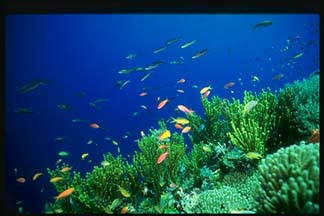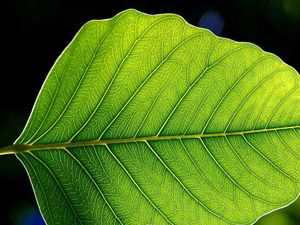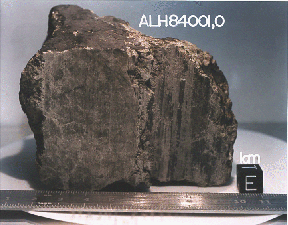A meal fit for a human heterotroph!
C.Alexander
Living Things Get Energy from Different Sources
We all know that living organisms need food to survive. Not all life forms consume the same things. Autotrophs, known as *self-feeders* are organisms which create "food" using energy from the sun, thermal energy from the Earth, or other such means to feed themselves. All members of the kingdom plantae as well as some protista and monera are autotrophs. Heterotrophs, known as *other-feeders* are organisms which feed themselves by eating other creatures, plant life, or organic molecules which exist outside of themselves. All members of the kingdoms animalia and fungi as well as some protista and monera are heterotrophs. On Earth, nature provides the following three mechanisms for living creatures to be supplied with energy.
Photosynthesis and Chemosynthesis are used exclusively by autotrophs. Both autotrophs and heterotrophs take advantage of respiration.
Last modified January 11, 2005 by Lisa Gardiner.
You might also be interested in:

Autotrophs are organisms that produce organic compounds from an inorganic source of carbon (carbon dioxide) given a source of energy. If the source of energy is the reactions of inorganic chemical compounds,
...more
Though not the largest kingdom, with a mere 300,000 species catalogued, many might argue that the Kingdom Plantae just may be the most important group of living organisms. In the process known as "photosynthesis",
...more
Members of the Kingdom Protista are the simplest of the eukaryotes. Protistans are an interesting assemblage of organisms classified for what they are not. Protistans lack characteristics shared by plants,
...more
Photosynthesis is the name of the process by which autotrophs (self-feeders) convert water, carbon dioxide, and solar energy into sugars and oxygen. It is a complex chemical process by which plants and
...more
Respiration is the name of the general process by which living organisms convert sugars and oxygen into biochemical energy. The process occurs in all organisms, including animals, plants, fungi, and bacteria
...more
Jupiter's atmospheric environment is one of strong gravity, high pressure, strong winds, from 225 miles per hour to 1000 miles per hour, and cold temperatures of -270 degrees to +32 degrees (freezing temperature).
...more
In July, 1996, it was announced that Dr. David McKay, along with a team of scientists at Johnson Space Center (a division of NASA), had discovered possible fossils of bacteria in an ancient rock from Mars.
...more















